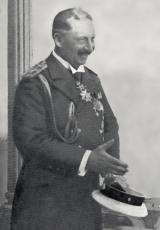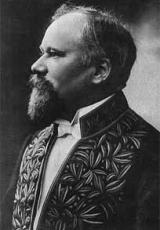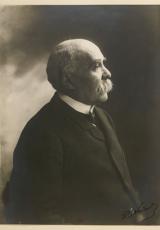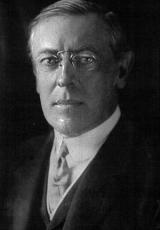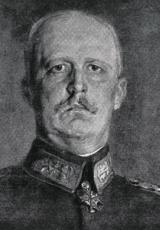First World War

Corps 1
The international context in which the hostilities start to appear in 1914 emerge from the profound changes which have affected Europe since the middle of the XIXth century. The fragility of the Balkans, which went through a strong nationalistic upsurge, the regrouping of the Austrian-Hungarian monarchy (1867) but also the implementation of the Italian (1870) and the German (1871) unity are all factors destabilizing the European balance, emerging from the treaty of Vienna (1815). The tension between France (eager to get Alsace and Lorraine back, annexed in 1871) and Germany on one hand, and between Austria-Hungry and Russia on the other hand, but also the role of England willing to maintain its global influence, stir up the risks of a conflict. After the Congress of Berlin (1878) the Ottoman empire itself is forced to acknowledge the independence of several countries, which belonged to its administration (Serbia, Romania, Bulgaria and Montenegro in particular). These new alliances, born from new repartitions, but also the constant competition between the biggest States (several crises between 1904 and 1914) can't avoid the confrontation.
Corps 2
The war breaks out after the assassination of François-Ferdinand June 28th 1914 in Sarajevo, nephew and heir of the Austrian emperor. Austria, after insuring the German support, submits an ultimatum to Serbia: this ultimatum requires, that the inquiries of the assassination circumstances must be conducted on the Serbian territory, by Austrian civil servants. Serbia accepts the conditions of the Austrian Government, but not those imposing the presence of Austrian agents. This would undermine the sovereignty of Serbia. July 28th 1914 Austria-Hungry declares war to Serbia. General mobilizations and the reciprocal ultimatums intensify between the allies, Germany declares war to Russia on August 1st and France the 3rd. England's retort, is the declaration of war against Germany on August 4th. The patriotism, long sustained by public opinions, allows the population and the political communities of the various belligerents to accept this situation and also allows to be perceived it as legitimate by each party.
The German armies, without taking into account the Belgian neutrality, fist attack France. This operation will be called "the battle of the borders" (August 7th to 24th): the French advance towards Mulhouse, Strasbourg and Lorraine. But in Mons and Charleroi (Belgium) the English and French are forced to move back, after strenuous fights. Where, in spite the efficiency of the French artillery, they have many difficulties in facing the dynamism of assailants (exceptional light gun 75). Having arrived in Paris on September 2nd, the Germans, rather than trying to seize the capital, try and capture the entire French army by surrounding them. It's the beginning of the "battle of Marne", during which the chief of the headquarters Joffre and General Gallieni, launches a general counter-offensive: General Foch resists bravely in the marshes of Saint-Gond. The army of General Maunoury is escorted by Parisian taxis towards the north of Marne: realising the failure of their operations, the Germans pull back towards Aisne September 10th; their commander-in-chief, Von Molke, is replaced by Von Falkenhayn. Paris is saved.
At this stage, between October and November 1914 starts the "running towards the sea". The German army tries to trick its enemy by moving on the left towards the north, in order to reach the harbours allowing the British troops to land. The French and English have to face rough and brutal fights in particular in Flandres (from October 1st to 27th). The soldiers dig large holes in the ground in order to protect themselves from the enemy and the winter. It's at this moment that the first trenches appear. Finally the front is established over 700Km between the northern sea and Switzerland; 10 French departments are partially or completely occupied. At the same time the eastern front allowes the Germans to win over the Russians who reacted with a counteroffensive (battle of Tannenberg, August 26th-30th 1914). But the need to remove troops from the French battlefield, reduces the German power during the battle of Marne. The strategic war that initially had predicted to overcome France very rapidly, ends on 1914 with 2 unexpected consequences: first of all the reciprocal neutralization of the armies and second, the extension to a world conflict: Japan joins the Entente (Great Britain, Russia and France). The Ottoman empire and Bulgaria join Germany and Austria-Hungary (October 1914).
The economic mobilizations, as well as, the psychological influence, are the two fundamental characteristics of this war conflict : on one hand the States must organize a real war economy, mobilizing all resources at their disposal to avoid a defeat (organisation of the resources, supplying, production of the armaments, massif use of the railroads, financing of the war effort). On the other hand a psychological and moral mobilization emerges among the public opinion (importance of the censorship in order to control the information). On the ground the trenches are transformed in a very efficient defensive system against the infantry (use of mines and barbed iron wire). At this time the heavy artillery becomes an essential fighting instrument while the aviation exceeding the simple role of observer is from now on used to chase and bombard the enemy. April 22nd 1915, the Germans use poisonous gaz for the first time during an attack in Ypres. January 30th 1918 the Germans lead the very first air raid operation on civil population bombarding Paris (hospitals and shops).
From both sides the war of position carries on. Between May and September 1915, Germany tries to beat Russia in organizing a strong offensive that gives them the chance to occupy Poland. In order to ease Russia, the French-English allies will try to take Dardanelles, but the operation will fail (January-February 1915). After the steamship Lusitania is attacked with torpedoes (May 7th 1915) the maritime war will take a new dimension. The occidental front has to face many offensive attacks of the allies (Artois in May 1915, Champagne in September 1915). These fights will cause considerable losses without important tactical profits. In 1916 in Verdun a German offensive will try to beat definitively the French army : this battle is one of the most violent und bloody in history. The fights will stop in June. The allies try to beat the front in Somme (July-November 1916) but without much success. The world conflict continues to extend : respectively Italy (May 1915) and then Romania (July 1916) enter in war and join the allies. The fights reach also Africa and the Middle-East (submarine war : English victory over the German fleet in Jutland, May 1916); the colonies have to provide assistance to Great Britain and France.
The conflict is longer than expected. In 1917 the troops starts to get tired of the sufferance and the constant fights. The failure of the French offensive leaded by General Nivelle in the "Chemin des Dames" (April 1917) begins a wave of mutinies. The headquarters have a lot of difficulties trying to control the situation. The Germans have to face the same phenomenon (navy in Kiel, fraternization with the Russians in the east front). Also the civil companies of the belligerents will face political and social commotions (strikes in arms factories, release of a revolt in Ireland against England). More and more, the public opinion opts for peace and would like to establish a "white peace" (without annexation nor allowance): conference of Stockholm (July 1917). In addition to that the German decision to practice a systematic underwater war, in order to loosen the economic blockade, induces the United States to participate to this war against the Germans (April 1917). At the same time the Russian revolution (February 1917) calls into question the balance of the different forces. The separate peace treaty of Brest-Litovsk (March 1917) confirms this new situation.
The year 1918 is crucial. Once released from the hostilities in the east, in March 1918 the Germans launch a very powerful offensive in Picardie, Flandres and the Chemin des Dames. This operation gives them the chance to break the front at the meeting point between the French and the English armies. This causes the creation of a single command entrusted to General Foch, in order to improve the coordination of the allied armies. The Germans organise another attack in July 1918 in Champagne but this one, stopped in extremis in Marne, will fail (second battle of Marne). The American industrial and human machine is launched: more then one million American soldiers on the French soil will participate in the operations which are regularly assisted by tanks. In July 1918 Foch launches a counter offensive which causes a progressive retreat of the Germans whose fold becomes more pronounced (the breakthrough of the German front will take place in August, the general offensive of Verdun in Yser starts in December 31st). As far as the Italians are concerned they have the chance to erase the Caporetto disaster (October 1917), by beating the Austrians in Vittorio-Veneto (October 1918). In the Balkans, under pressure from the allies (Franchet d'Esperey victorious in Uskub), the central empires are captured from behind; Bulgaria and Turkey are more and more isolated and ask the armistice (October 30th); Austria follow the example on November 3rd. Facing the turnaround of the military situation, the political agitation reaches Germany : the German fleet revolts in Kiel, the revolution breaks out in Berlin, Guillaume II abdicates and the republic is proclaimed November 9th. The armistice is signed in Rethondes November 11th.
Total estimated assessment in human losses (died and disappeared soldiers) :
Belligerent Nations | ||
Allies | Mobilized | Deaths |
France | 8 317 000 | 1 390 000 |
Great Britain | 6 000 000 | 776 000 |
Belgium | 380 000 | 44 000 |
| Serbia | 450 000 | 400 000 |
Italy | 5 615 000 | 530 000 |
Portugal | 60 000 | 8 000 |
Greece | 200 000 | 12 000 |
| Rumania | 1 000 000 | 158 000 |
Russia | 15 000 000 | 1 700 000 |
United States | 3 800 000 | 114 000 |
Canada | 630 000 | 62 000 |
Afrique du Sud | 136 000 | 9 000 |
| Australia | 413 000 | 60 000 |
Nouvelle-Zélande | 128 000 | 18 000 |
India | 1 500 000 | 75 000 |
Central Empires |
|
|
Germany | 13 000 000 | 1 950 000 |
Austria-Hungry | 9 000 000 | 1 047 000 |
Bulgaria | 950 000 | 100 000 |
The Ottoman empire (Turkey) | 2 850 000 | 400 000 |


